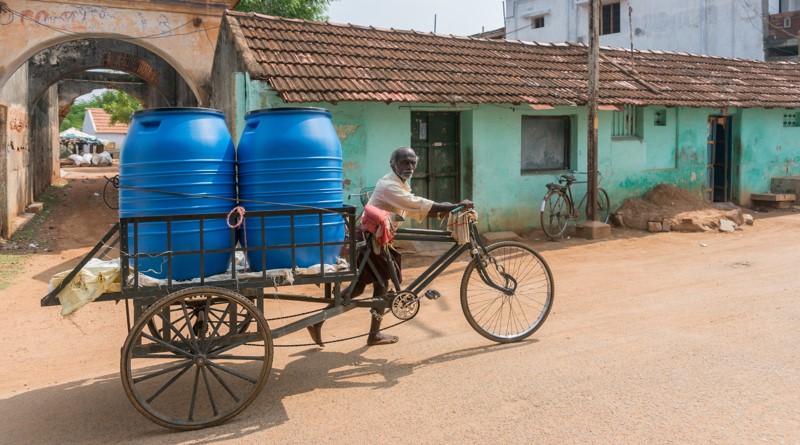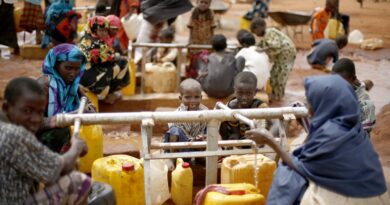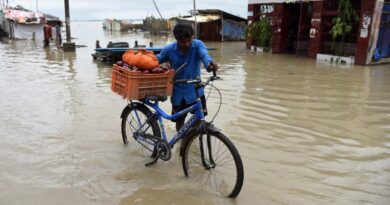Innovative instruments needed to mobilise water finance post pandemic, says SFG

There is an immediate necessity to examine new instruments of innovative finance for funding water-related projects in the wake of the global recession caused by the Covid-19 pandemic, Mumbai-based think-tank Strategic Foresight Group (SFG) has said.
Due to declining tax revenues, reduction in savings and drastic cuts in development cooperation budgets, globally, it would be difficult to mobilise additional financial resources for one of the most significant SDGs – on water even as it at the core of our economic and social life.
“If water does not receive funding due to the expected recession of the next two-three years, there will be multiple crises”, the SFG wrote in a recent report that looks at funds and instruments dedicated to water and water infrastructure. For instance, from more generic sovereign wealth funds and green bonds for water, SFG throws up the idea of a Congo Basin Blue Fund as well as Blockchain token economy. The other instruments discussed in the report are water finance facility and the Green Climate Fund.
It is necessary to craft innovative ways and means to develop new funding avenues for water, the report underlines, stating that the ecosystem of water infrastructure has many facets. It includes companies that provide public water supply (construction, distribution and delivery) through dedicated equipment and technologies.
Users of water are found in WASH sectors, households, industry, agriculture, environmental activities and recreational activities. In order for water infrastructure projects to function effectively they need to overcome various primary, transactional and maintenance related costs.
The traditional approach to finance water has been through taxes, transfers and tariffs. As this money is in short supply, it is necessary to develop an innovative approach in the search for finance.
The World Bank’s water and sanitation programme has calculated that the world needs $114 billion (range of $74 billion to $166 billion) a year in order to fulfil SDG 6.1 and 6.2. This is broken down under annual costs of safe fecal waste management ($49 billion), safe water ($37.6 billion), basic sanitation ($19.5 billion) and hygiene ($2 billion) per year.
The geographic share of $114 billion per year is to be divided among Sub-Saharan Africa (approximately one third), southern Asia, eastern Asia, Latin America with Caribbean region and south-eastern Asia. In addition, funds are required for sectors using water resources. These include hydroelectricity, irrigation, industrial cooling, navigation, ecological tourism, among others.
The investments in these sectors would amount to hundreds of billions of dollars. Most of these are long term investments, the SFG report noted.
Water infrastructure projects by nature are longer term projects that contribute to economic development and are most needed in developing economies. While such projects can be found at the local, national and international level their financing can be met through international investments. “In the interest of low risk appetite across long term funds, a Sovereign Investment Vehicle for water infrastructure finance is a promising goal”, said SFG.
A Sovereign Wealth Fund (SWF) is an independent government run investment of a single country formed by its surplus reserves, usually due to over-performance of a single domestic industry, with the objective to invest across a portfolio of industries, within its own economy or around the world.
“The objective behind a SWF to finance a foreign water infrastructure project, besides investment return, is for diversification towards a renewable resource, protect domestic economy from over-emphasis on one non-renewable resource, and increase savings for future generations or possibly even exercise political ambition through its Fund. Ticket size is also favourable factor”, noted the report.
According to the Sovereign Wealth Fund Institute explained, as of April 29, 2020, the cumulated asset value of the world’s top 91 active and large SWFs stood at $8.1 trillion. Within this, infrastructure projects have managed to become a favourite due to its inflation adjusted steady income streams.
However, there are two important considerations for the water sector while harnessing SWFs in the future, argues the SFG report.
First, the water sector should provide proposals for innovative greenfield projects which can attract real investment and have an impact on the ground. It is easier for the SWFs to invest in the financial economy through capital markets, rather the real economy through greenfield projects. Therefore innovation in conceiving new greenfield projects is essential.
Secondly, even in a recessionary period, SWFs have considerable resources to invest. It is for the water sector to present attractive projects, it adds.



